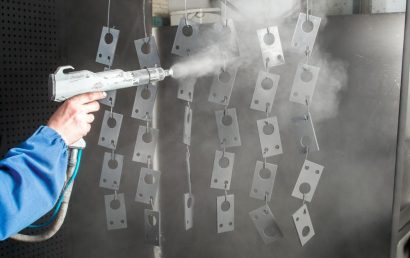Improving Crankshaft Durability with Micro Surface Enhancements
Micro surface enhancements have been added to the grinding process involved in crankshafts. This new enhancement most importantly improves longevity, but it also improves the aesthetics.
Recent Additions to the Process
The process of grinding is not uncommon when it comes to the machining of crankshafts. New grinding technologies have developed through the years to better the overall quality using rotary diamond wheel dressers and CBN (cubic boron nitride) and carbon fiber hub wheels. But now, there’s a new kid in town. A new finishing process improves both the aesthetics of camshafts and, most significantly, reduces premature, abnormal lobe wear, thereby extending the life of a crankshaft.
How does it work? This finishing process is kinetic. Side to side waviness is minimized across a crankshaft lobe’s surface. It also removes remnants left behind from grinding, such as tiny peaks of material. Between a lobe and its mating lifter’s roller, this increases the effective surface bearing area. This takes the localized stress usually experienced during operation by crankshaft lobes and lowers it. That minimizes imperfections that are usually so small they are microscopic. Small as they are, however, they could become problematic and propagate on a macro scale.
MSE or Micro Surface Enhancement
The finishing process referred to above is called MSE or micro surface enhancement. Currently, it’s being offered for General Motors LS engine roller lifter camshafts as a standard feature. For an added cost, it can also be used in custom racing applications.
As with many improvement processes, it was not necessarily a cure-all, however. That’s where the improvements in the grinding process itself came into play. When the grinding process was refined, a more improved crankshaft lobe surface profile overall was generated. This improved finish and profile maximizes MSE benefits.
Various Finishing Processes Attempted
In an attempt to improve the quality of journal surfaces and crankshaft lobes, various finishing processes were researched. Some of these include the following:
- Micro peening – Micro media was used to blast the lobe surface through this kinetic energy process. Unfortunately, around the circumference of the stress risers found on these parts, tiny craters were created. Additionally, after the micro peening process, it was difficult to remove all of the media left behind on the crankshaft.
- Acid etching – This softens and anneals the iron surface of the lobes. In order to smooth them, they were then polished with media. Points of localized stress were created, however, by the peaks of carbide that could possibly be left behind.
- Belt sanding – This was challenging at best. The result, if not done properly, was a wavier lobe surface as a result of pressure that was not uniform.
Finally, a manufacturer was discovered that made machines that would execute centrifugal barrel finishing. It took a few years to create, but eventually a customized process of kinetic energy finishing was established. It is now used on the processing of crankshafts.
A & A Coatings can help you improve the durability of most any part, component, piece of machinery, surface, and more. You will be pleased, and possibly even surprised, by how much of a difference our thermal spray protective coatings can make when it comes to your bottom line. Talk to one of our experienced, knowledgeable representatives today to find out how thermal spray protective coatings can benefit you, your business, and your industry.



